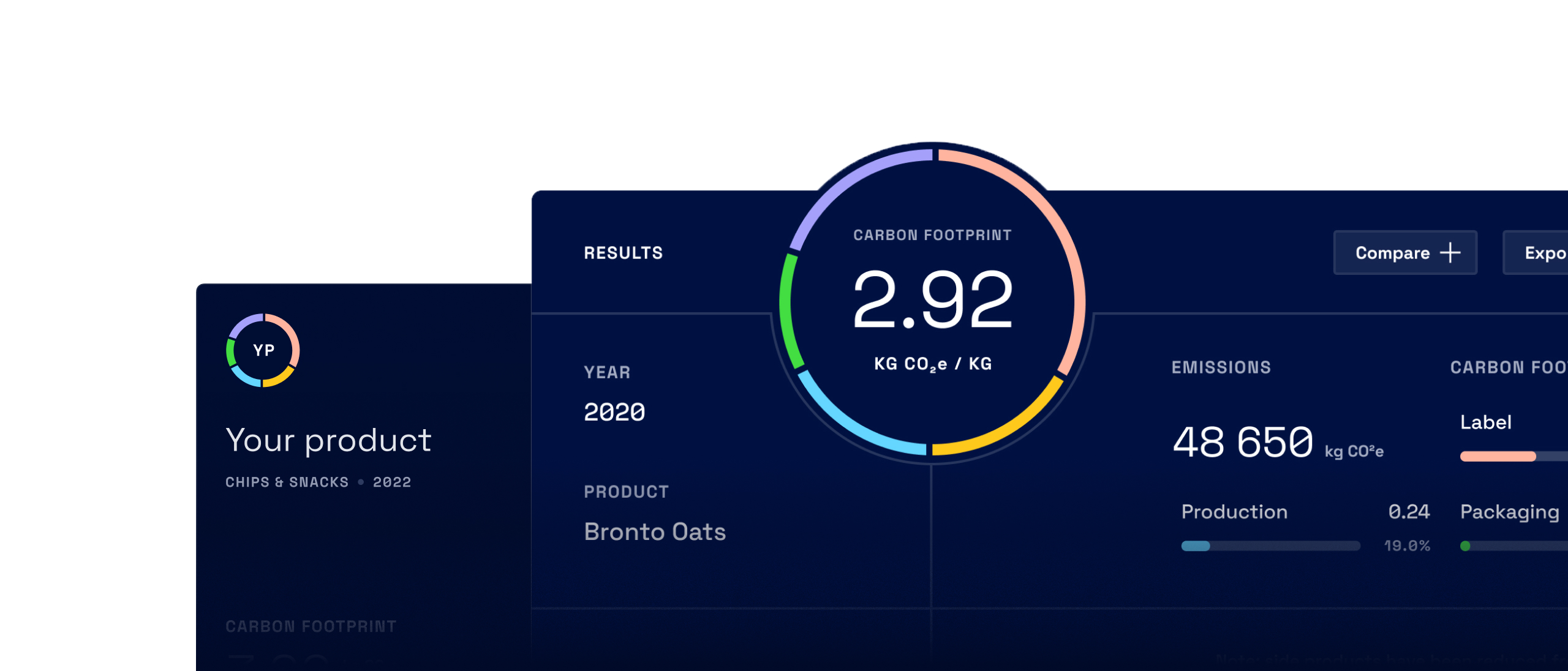The digital carbon footprint calculator, Biocode, designed for the food industry, helps companies calculate and report the carbon footprints of their products and corporate emissions throughout the entire value chain. The goal is to reduce carbon dioxide emissions from food chains and tackle the climate crisis.
“Biocode’s carbon footprint calculator is designed to simplify the calculations for both small businesses and multinational food brands. Achieving a sustainable food system is a collective task in which the entire food chain must participate,” says Ernesto Hartikainen, CEO of Biocode.
The tool’s calculation models are based on life cycle assessment and carbon footprint calculation standards. In addition to user input data, it utilizes data from public databases, and the tool includes a growing emissions factor database.

Emissions calculation in the Food industry is unique
Sustainability reporting requirements will change in 2024 when the European Commission’s Corporate Sustainability Reporting Directive (CSRD) gradually takes effect.
Companies subject to reporting obligations, such as large retailers, will require emissions data from food companies to meet their own reporting requirements. This is why smaller companies should also prepare for emissions reporting.
Previously, calculating total emissions has been difficult and resource-intensive. With the digital carbon footprint calculator developed specifically for the food industry, food companies can easily calculate emissions generated in their operations as well as those generated in their value chains.

Typically, nearly all of a food company’s emissions occur within its value chains: in primary production, procurement of products and services, and equipment investments. A good rule of thumb is that over 80% of emissions-producing activities should be measured with primary data, meaning data collected directly from the original sources.
For food production, this entails emissions calculation in collaboration with service providers, producers, and farmers. When there are potentially thousands of actors involved, the working hours of any one company’s sustainability expert are insufficient for data collection. This is why scalable digital solutions are needed.
“For producing a single food item, multiple raw materials are required, produced by potentially thousands of primary producers. Comprehensive data collection from each one individually is impossible, as it would require visits or calls to each producer one by one,” explains Ernesto Hartikainen, CEO of Biocode.

Life cycle assessment enables sustainable product development and compelling sustainability communication
Calculating greenhouse gas emissions for food companies is convenient with Biocode. In addition, users are pleased with the feature for calculating the carbon footprints of food products. This allows emissions to be calculated on a product-by-product basis, resulting in the carbon footprint of a finished food item.
Life cycle assessment is often used in product development when attempting to experiment with changes in production inputs or raw materials to create lower-emission products. Many are surprised to learn that by switching to a less emission-intensive raw material or eco-friendly packaging material, the carbon footprint of a product can significantly decrease.
“Using Biocode has given us a lot of ‘ah-ha!’ experiences. It has been insightful to use the calculator and see how different raw materials affect the end result. We have learned that rapeseed oil, for example, can increase the carbon footprint of products quite a lot,” says Linda Forss, Procurement Manager at Anton&Anton.
Product-specific carbon footprints are also needed in creating impactful marketing messages. When life cycle assessment is conducted in Biocode, and experts have verified the results, it is easier to create consumer-friendly messages based on reliable information. This also enables compliance with the soon-to-be-enacted Green Claims Directive guidelines for sustainability communication.

Data-driven climate actions
Compared to traditional, consultant-driven life cycle assessments, Biocode is a fast and cost-effective solution for companies. In the future, companies will need a continuous solution because emissions calculation must be repeated annually. When reporting and calculation are in the company’s own hands, its understanding and expertise grow, allowing for effective emission reduction measures.
Effective climate actions are crucial as companies aim to achieve the goal of halving greenhouse gas emissions by 2030, as outlined in the Paris Agreement. Sustainable food production requires the elimination of fossil emissions from the food system. And impactful climate actions are only possible when a company has reliable information about emissions throughout its supply chain.
Biocode clinched the top spot at the TONIC Summit 2023 pitching competition, securing the win in front of a distinguished jury panel consisting of Juha-Petteri Kukkonen, Charlotta Gylche, and Henrik Poulsen.
Click here to read more community news.




